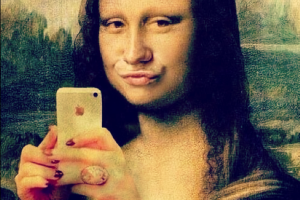(Similar to Chloe, I had trouble finding information about the cultural essay – all there seems to be is a short blurb on personal cultural criticism that Chloe used in her blog post already. But I think she did a great job exploring the meaning of culture and the importance of the aspect of collectiveness in the cultural essay: “Compared with a personal essay, a personal cultural criticism sheds light on specific cultural issues that are loaded with more collective features of a cultural or sub-cultural group instead of the mere idiosyncratic bearing on the writer himself.”)
We mentioned in class that the Spanish used in La conciencia de la Mestiza is purposely alienating to readers who have no Spanish foundation, and purposely inclusive to readers who have more knowledge in Spanish. Here, the essay is exposing certain readers’ inability to fully understand the writer by making the reader feel his/her lacking of understanding. It exposes whether the reader cares enough to translate certain parts of the essay in order to understand better, or whether the reader cares enough to even read the essay.
As for the reader who knows more Spanish, the reader is automatically connected to the writer in a deeper way. There is something special about reading bits of your mother tongue among a foreign language – it is finding the familiar in a foreign land, the often-forgotten minority in the majority. A candle is more illuminating in a dark room, just like words from a mother tongue are more precious and special in a sea of words from a language that is so mainstream yet inadequate in expressing one’s identity.
The special thing about presenting one culture within another culture. It is a learning process for both the writer and the reader; the need for understanding goes both ways. Writing about Hong Kong in English is very much different from writing about Hong Kong in Chinese. Something that is old to me becomes something new to others, and sometimes even to myself – often times I gain new perspectives on my home culture when I need to present it in a language that is associated with a different culture, or when I need to cater my descriptions of home to an audience from a different culture. For example, if I compare a Hong Kong dessert with a Twinkie, that would obviously be catering to Americans, and in the process I learn to look at a dessert from home through another cultural lens too.
If all creative works aim to present a new perspective on various issues and aspects of life, then cultural essays aim to present a new perspective on certain cultural values/beliefs through the narrator’s relationship with a culture. New light is shed on the narrator’s culture and any other cultures explored in the essay. By highlighting cultural traits and traditions, the reader learns how different and/or similar their culture(s) is/are with the culture(s) of the writer, and learns to see another culture in the “other’s” eyes. I would expect that the writer has special authority in guiding the reader through issues in the essay, because the writer is (usually) familiar with the culture he/she writes about. This would be different from unreliable narrators – there seems to be a need for a reliable narrator in cultural essays, so that the critique of culture is clear and convincing, and so that the “other” culture isn’t more unaccessible than it was before the reader started reading the essay.
Being someone who has been exposed to so many cultures (Hong Kong, China, Scotland, USA, and more during travels), it’s hard to not see most of my essays as somewhat cultural essays. I feel a constant need to show people that there are sides of me they do not know. I don’t necessarily expect them to understand those parts of me, but I want them to acknowledge the existence those parts of identity and their inability to understand them. So I am thankful for cultural essays that remind people that there is so much more than your skin color, place of birth, accent, favorite foods, fashion style, etc., but rather the conversation all those things have with one another and with different people’s experiences and values, how the representation of a certain culture is unique depending on which culture the writer is catering to.
 serious problems than those whom we label “disabled”. For me, the girl who is obsessed with taking 999 selfies every day is more blind than a person with eyes that cannot see. Her mental condition (self-centeredness, vanity) limits her senses of true beauty and her ability to love herself and others despite their appearance. People who cannot view “disabled people” as people of value have more “disabilities” in their thinking than all those people they look down upon.
serious problems than those whom we label “disabled”. For me, the girl who is obsessed with taking 999 selfies every day is more blind than a person with eyes that cannot see. Her mental condition (self-centeredness, vanity) limits her senses of true beauty and her ability to love herself and others despite their appearance. People who cannot view “disabled people” as people of value have more “disabilities” in their thinking than all those people they look down upon.